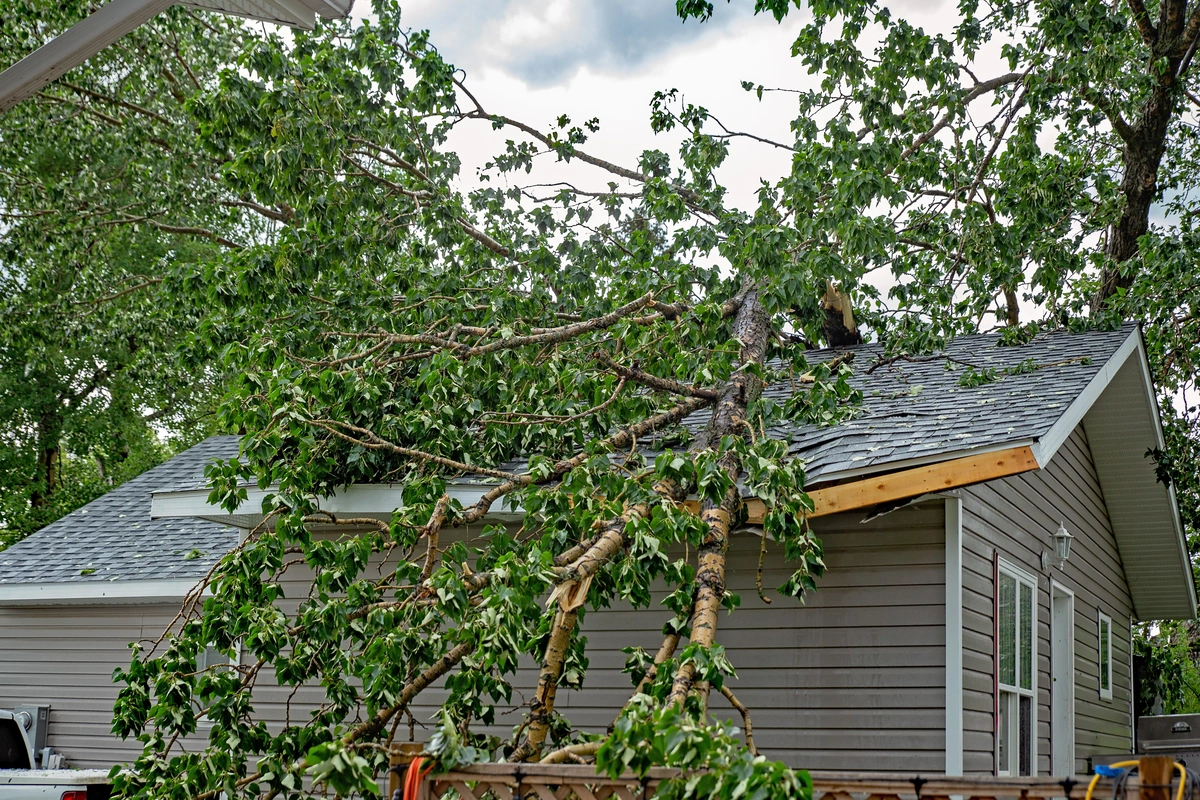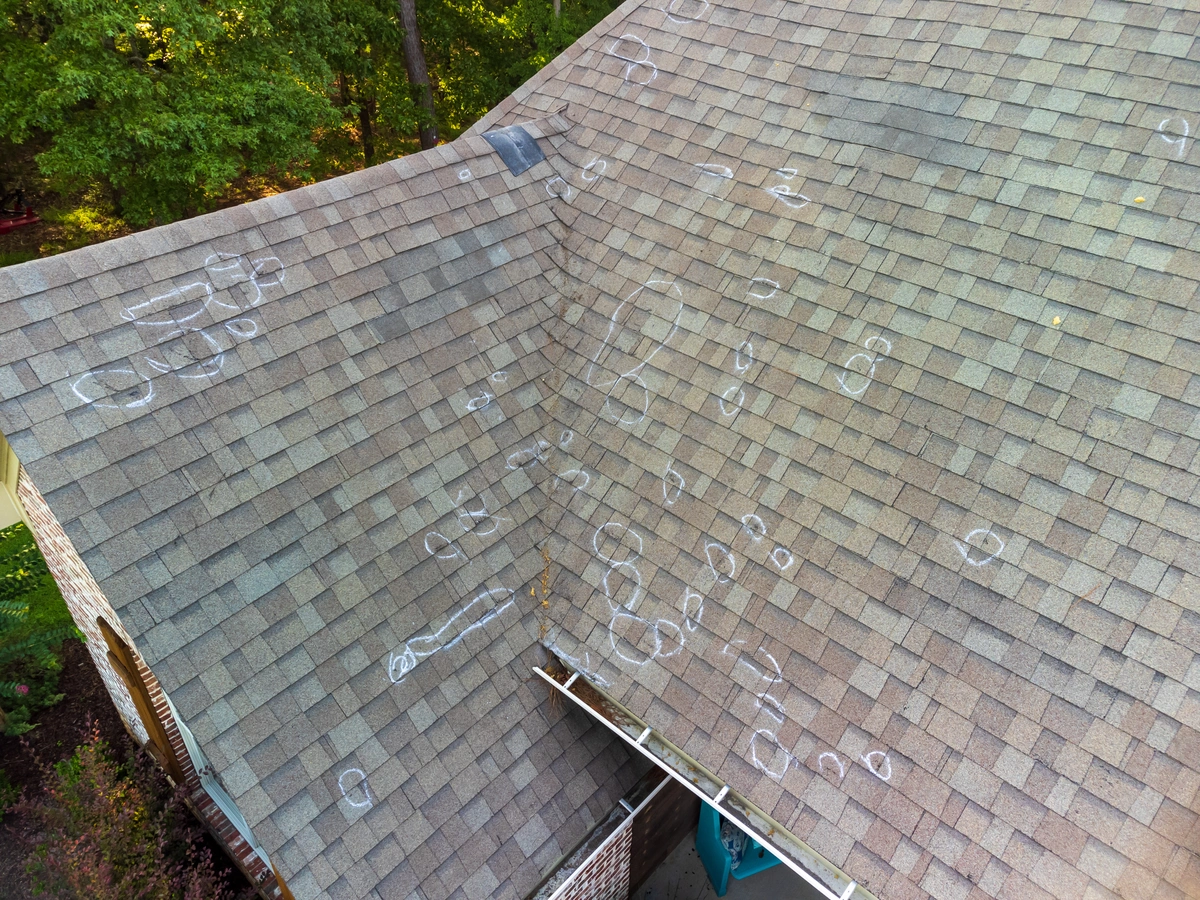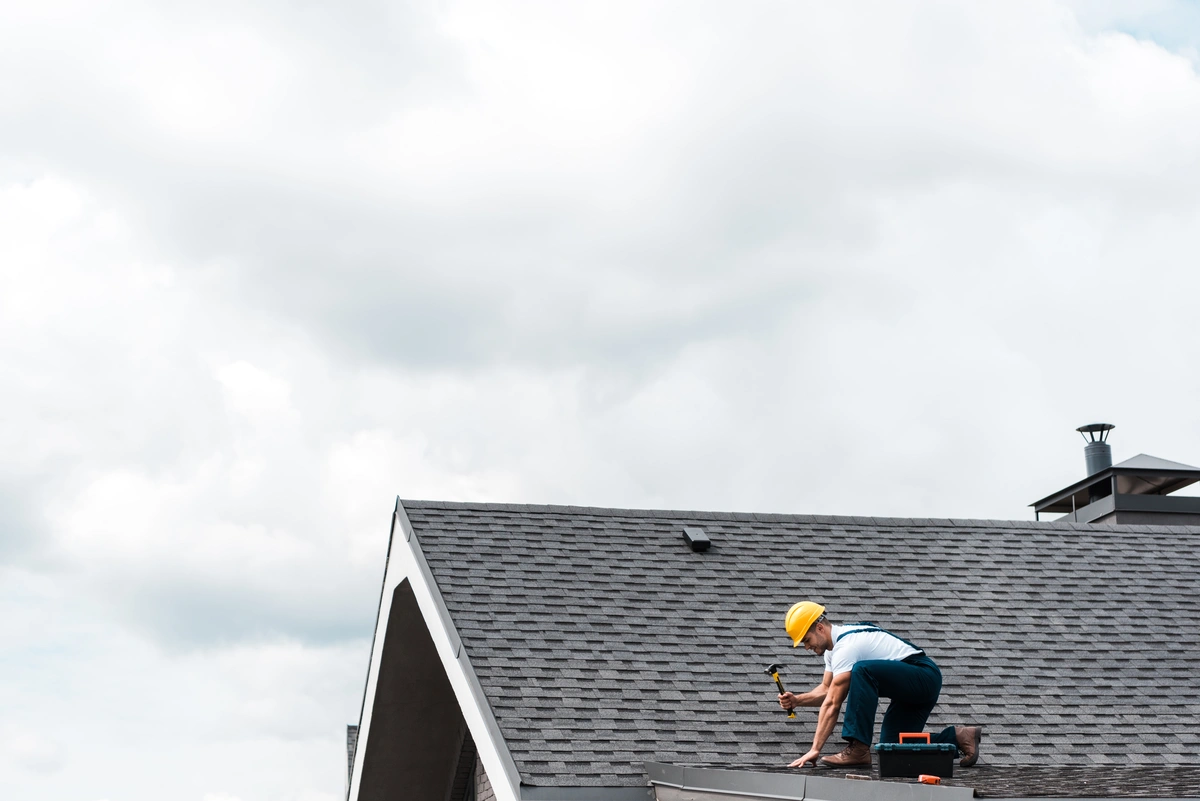Storms can be breathtaking displays of nature’s power, but they can also leave a trail of destruction in their wake, especially when it comes to your home’s roof. Whether it’s fierce winds, pounding hail, or relentless rain, severe weather can cause significant damage to your roof, compromising its integrity and leaving you vulnerable to leaks, water damage, and more.
In today’s blog, we’ll delve into the various aspects of roof storm damage, including:
- Signs to watch out for
- Different types of damage
- Steps to take when you spot damage
- The costs involved in repairs
- When it’s time to call in a professional roofing contractor
5 Signs of Storm Damage to Your Roof
Looking to see if your roof is damaged? Here are the signs to look our for:
1) Missing or Damaged Shingles:
High winds can rip shingles off your roof or cause them to curl, crack, or become dislodged.
2) Granule Loss:
Hailstorms can knock granules off asphalt shingles, exposing the underlying material and compromising its protection against the elements.
3) Dents or Pockmarks:
Hail can leave behind indentations or pockmarks on shingles, metal roofing, or other materials.
4) Leaks or Water Stains:
Water stains on ceilings or walls, or signs of water intrusion in your attic, indicate that your roof may have developed leaks.
5) Sagging or Buckling:
The weight of accumulated water or debris, combined with weakened roof support structures, can lead to sagging or buckling in your roof.
Different Types of Storm Damage
Storm damage comes in a lot of different forms, including:
Wind Damage:
Strong winds can lift and remove shingles, tear off flashing, and even cause structural damage to your roof.
Hail Damage:
Hailstones can cause dents, cracks, and punctures in roofing materials, leading to water penetration and subsequent issues.
Water Damage:
Heavy rainfall, combined with compromised roofing materials, can result in leaks, water stains, and rot.
Debris Damage:
Flying debris during storms can impact and damage your roof, including branches, tree limbs, or other objects propelled by high winds.
What to Do When You Spot Roof Storm Damage: 5 Steps
What comes next? Here are the steps you should take to keep your roof safe:
1) Conduct a Visual Inspection:
Carefully examine your roof from the ground using binoculars, if necessary, to look for signs of damage.
2) Document the Damage:
Take photos or videos of any visible damage for insurance purposes.
3) Address Immediate Concerns:
If you spot leaks or water intrusion, take immediate steps to mitigate further damage, such as placing buckets to collect water or tarping affected areas.
4) Contact Your Insurance Provider:
Report the damage to your insurance company as soon as possible and provide documentation to support your claim.
5) Schedule a Professional Inspection
Hire a qualified roofing contractor to conduct a thorough inspection of your roof and provide an assessment of the damage.
How Much It Costs to Repair Your Roof
The cost of repairing storm damage to your roof can vary widely depending on the extent of the damage, the materials involved, and the labor required. Here’s a breakdown of potential costs:
- Minor Repairs: Small repairs such as replacing a few missing shingles or patching a leak may cost a few hundred dollars.
- Moderate Damage: More extensive damage, such as replacing multiple shingles, repairing flashing, or addressing minor structural issues, could range from $1,000 to $5,000.
- Major Repairs or Replacement: Severe damage that requires significant repairs or a complete roof replacement due to extensive water damage, structural issues, or other factors can cost anywhere from $5,000 to $15,000 or more.
When to Call a Roofing Contractor
While some minor repairs may be feasible for DIY enthusiasts, it’s often best to leave roof storm damage repairs to the professionals. Here are some situations where you should consider calling a roofing contractor:
- Extensive Damage: If your roof has sustained significant damage or if you’re unsure of the extent of the damage, it’s best to have a professional assessment.
- Safety Concerns: Working on a roof can be dangerous, especially after a storm when conditions may be hazardous due to debris, slippery surfaces, or weakened structures.
- Insurance Claims: A roofing contractor can provide documentation and estimates to support your insurance claim, ensuring you receive adequate coverage for repairs.
- Expertise and Experience: Roofing contractors have the knowledge, skills, and specialized equipment to safely and effectively repair storm damage and restore your roof to its pre-damaged condition.
Severe Storms? Call Trojan Roofing!
Roof storm damage can be a homeowner’s worst nightmare, but knowing how to recognize the signs of damage, understanding the different types of damage, and taking prompt action can help minimize the impact and prevent further issues. While some repairs may be minor and manageable, it’s essential to prioritize safety and quality by entrusting major repairs or replacements to experienced roofing professionals. By staying vigilant and proactive, you can weather the storm and ensure your roof remains a sturdy shield against nature’s wrath for years to come.
Contact Trojan today to let us identify roof damage on your home!



